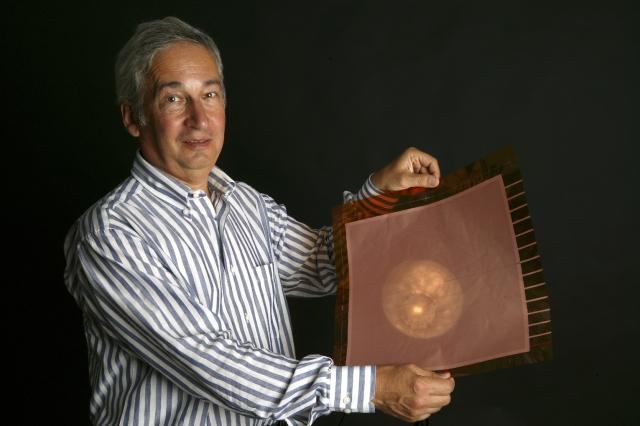The Gas Electron Multiplier (GEM) is a proven amplification technique for position detection of ionising radiation such as charged particles, photons, X-rays and neutrons, in gas detectors. The GEM is a detector containing a densely pierced polymer foil coated with electrodes on both sides which is able to achieve high amplification gains and performance at low cost, even under harsh conditions. A GEM consists of a thin, metal-clad polymer foil, chemically pierced by a high density of holes. On application of a difference of potential between the two electrodes, electrons released by radiation in the gas on one side of the structure drift into the holes, multiply and transfer to a collection region. This gas detector is extensively used in High Energy Physics.
This CERN patented technology has more than 50 R&D and commercial licensees around the world. In 2017, CERN experts developed two GEM variants: i) The Optical readout GEM, which is being tailored for online dose imaging in hadron therapy and ii) the GEMpix detector, which has applications in conventional radiotherapy.
Advantages & Applications
Possible applications
- Medical Imaging.
- Radiation Therapy Dosimetry.
- High-Energy Physics.
- Astronomy/Astrophysics.
- Material Analysis.
- Systems for Radiation Detection and Monitoring.
Advantages
- Safe non-explosive gas mixtures.
- Very high radiation rate capability.
- High sturdiness and reliability.
- Flexible detector shape and readout patterns.
- High time and position resolutions.
- High performance at low cost.
- High achievable gains in a multiple pre-amplification structure.
- Can be used as detector on its own.
- Works in harsh radiation environment.
Limitations
- Complexity added by gas chamber compared to solid-state detectors.
- Low quantum efficiency compared to solid-state detectors.
Specifications
Specifications
- 200 cm x 50 cm currently maximum active area.
- 1 MHz/mm2 of photon flux rate.
- 40 micrometers of spatial resolution.
- 90% achievable gain – 105.
- 15-20% energy resolution.
- Holes pitch: 140μm
- Holes diameter in copper: 70μm +/-5μm
- Holes diameter in Kapton: 50μm +/-5μm
- Leakage currents: less than 10 nA at 600V @ 30%HR
- Breakdown voltage: 650V in air @ 30%HR
Documented material
- A marriage of pixels and proportional counters, (CERN Courier July/August 2004)
- A GEM of a detector, (CERN Courier December 1998 p19).
- Commissioning of the GEM Detectors in the COMPASS Experiment, Frank Simon, Physik Technische Universitaet Munich, November 2001
- Development of a gaseous detector based on Gas Electron Multiplier (GEM) Technology
F.Murtas (LNF-INFN), Nov.2002 - Developments and the Preliminary Tests of Resistive GEMs Manufactured by a Screen Printing Technology, G. Agócs, B. Clark, P. Martinego, R Oliveira, V. Peskov, P. Pietropaolo, P. Picchi, Journal of Instrumentation Volume 3, February 2008.
- CASCADE a High-Rate Detector for Neutron Applications in Science and Research, University of Heidelberg
- Also see the related technologies Micro Chemical Vias, Resistive MicroMegas and Radon Detector with High Gas Gain Operable in High Humidity
Technical contacts
- L. Ropelewski - Technical questions on GEM physics
- R. De Oliveira - Technical questions on GEM manufacturing and pricing

